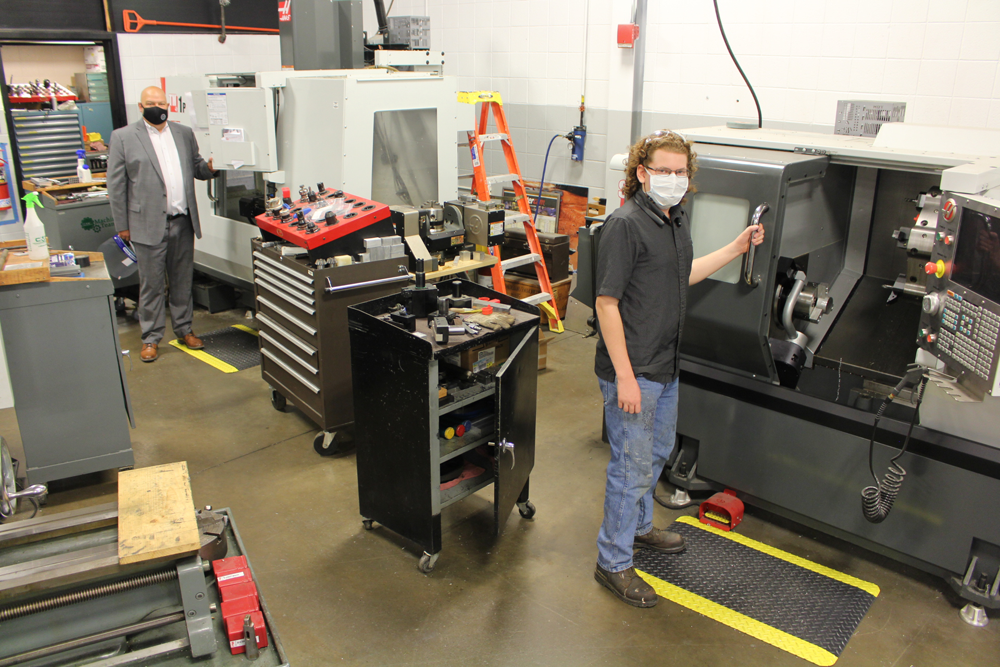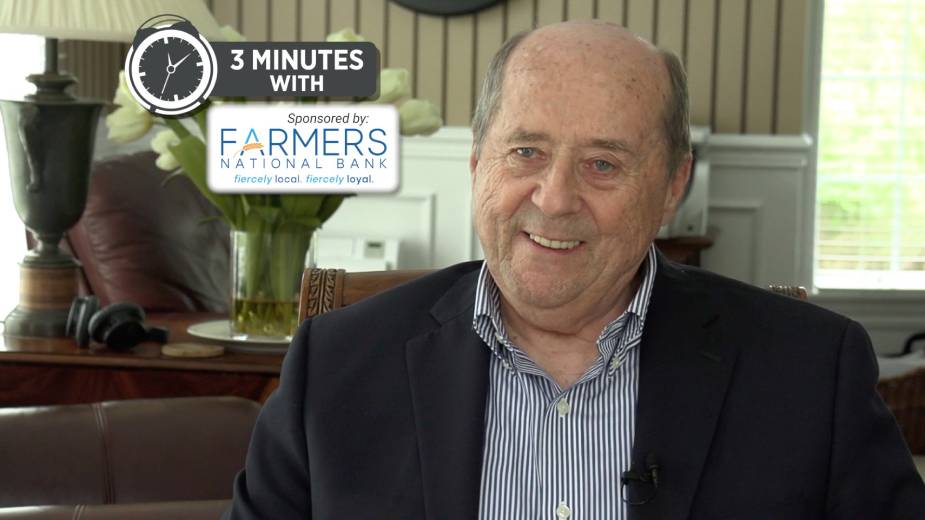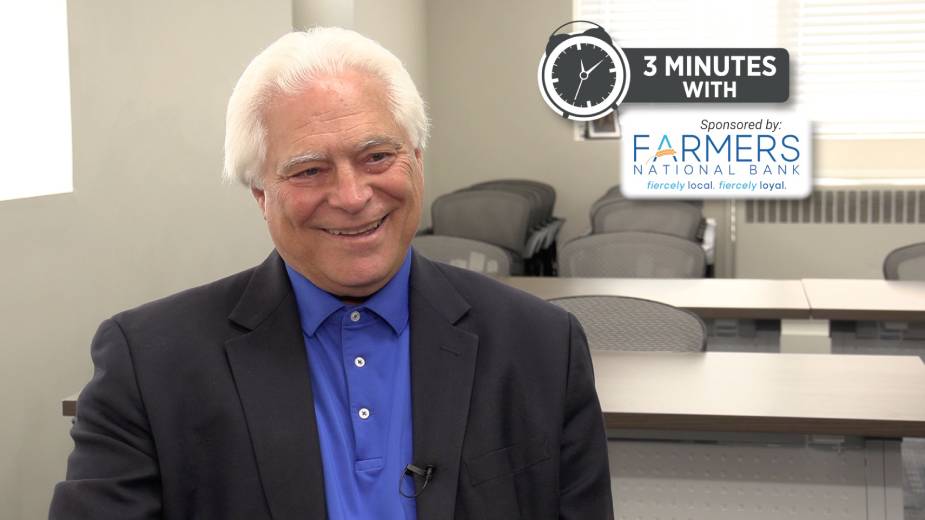Career Centers Stay Hands-On During Pandemic
YOUNGSTOWN, Ohio – Career and technical schools have their hands full this school year as they work to adapt their hands-on curriculum to new requirements amid the coronavirus pandemic.
For the most part, regional career centers are gearing up for in-person classes in some capacity, with the exception being Choffin Career & Technical Center in Youngstown. Choffin is bound by Youngstown City School District’s schedule and is starting the year fully remote, says Principal Mike Saville.
Since programs there are front loaded with preparatory work – which doesn’t necessarily require in-person learning – there is room for flexibility in the two years a student attends Choffin, Saville says.
“Right now, it’s a lot of thinking outside the box. A lot of shifting in our schedule,” Saville says.
Both the Mahoning County Career and Technical Center, Canfield, and Laurel Technical Institute in Sharon, Pa., are planning for more of a hybrid year. MCCTC will see its juniors in class Mondays and Wednesdays, while its seniors will attend Tuesdays and Thursdays. Fridays will be online education for all students, says Superintendent John Zehentbauer.
With 800 students enrolled – an increase over last year – MCCTC knew it couldn’t fit all students in its building while abiding by social distancing requirements, he says. Students will spend the entire day in their lab areas, which is already well-spaced.
“We’re blessed with big labs,” Zehentbauer says. “We can spread them out and we have the advantage of already having space available.”
Columbiana County Career and Technical Center will keep desks in its labs for students’ academic study, says Jeremy Corbisello, director and assistant superintendent. The downside, he says, is that students will have to move their desks when it’s time for hands-on education.
“We’re calling it a bridge plan here at the career center,” Corbisello says. “These changes we’re making are to bridge us from the first day of school so we can get everybody in school safely.”
CCCTC is bringing students back five days each week with an option for remote learning.
Career centers are preparing contingency plans should they be forced to close again. Each center in Ohio had to develop and submit a plan to its district’s board of education for approval, Corbisello says.
The biggest concern with remote learning is ensuring students get the training they need for certification. Currently, 25 of CCCTC’s 453 students opted for remote learning. While the school is working to accommodate those students, Corbisello allows that the longer they work remotely, the harder it will be for them to earn their credentials.
“They won’t have the same hands-on experience as the students who were here face-to-face,” he says. “If you want to be out this whole year, you’re going to miss a year of hands-on learning.”

For certain professions, such as nursing or auto mechanic, virtual learning is “really not an option,” Zehentbauer agrees. The workplace has changed since before the coronavirus pandemic and instructors at MCCTC worked closely with industry professionals on what is expected of the new workforce.
“We’re able to adjust our labs to mirror that,” Zehentbauer says. For instance, the cosmetology instructor requested separation shields between each station, as well as face shields for each student, facemasks and other personal protective equipment.
If remote learning goes beyond a semester at Choffin, the school will have to start working with the state and industry boards to explore the options for credentials, Saville says.
“Some credentials take one to 1.5 years to complete with required skills sets they have to be able to perform to earn the industry certifications,” Saville says. “We can’t cut corners with those.”
Firefighter training, for example, has strict mandates for testing on suiting up, using equipment, extinguishing fires and working with live burns. Choffin will have to work with the district and the health department to create face-to-face options for students.
Instructors are creating plans and procedures for what they will look like and are getting plans ready to present to the district’s CEO, Justin Jennings, to get exemptions for students, Saville says.
“We’re pretty confident that if we base that in industry requirements, we’ll be allowed some flexibility,” he says.
Because programs are typically front-loaded, many Choffin students earned certifications before the coronavirus pandemic forced schools to close, Saville says. The end of their senior year is usually focused on apprenticeships, internships and job placement.
That took a hit as the pandemic also forced businesses to close, Saville notes. Instructors maintained close contact with students during that time and, as things started to reopen, worked with graduated seniors to get them placed, he says.
Attendance is also a concern with virtual learning. Choffin instructors and education assistants are tasked with ensuring students participate in their online classes and will connect with parents when a student is inconsistent, he says.
Career services advisers, who usually set up internships and apprenticeships, will work with students and parents to keep them motivated by showing them there are jobs waiting after graduation, he says.
“If you’re not here, here’s the opportunities that are vanishing before your eyes,” Saville says. “Here’s a list of employers aching for someone in this area. If you continue to be engaged and you’re prepared, you’re going to get a job.”
Enrollment is up at Choffin this year by about 40 students to 430, “which is a big increase for us,” he says. He attributes that to increased advocacy from guidance counselors touting the benefits of career and technical education.
“They’re taking advantage of that and pushing our program and drumming up interest,” Saville says.
COVID-19 prevented Laurel Technical Institute from holding its spring enrollment drive, says Douglas Decker, executive vice president. While fall applications are looking up, Decker projects a 10% decline year-over-year if all the applicants follow through.
For the 2021-2022 school year, however, he expects enrollment to be back up to where it was before the pandemic, particularly if some job losses are permanent and adults need training.
“I think we’re poised to be in a good position to help people because our programs are shorter in length,” he says. Laurel programs tend to run 12 to 20 months.
“Now is the time to go to school,” Decker adds. “That is the perfect amount of time to come in and get your skills updated and be ready in a year.”
Laurel saw a “big enrollment increase” for six of its programs that are mostly online, Decker says. The rest of the more hands-on programs will be taught mainly in class with some flexibility when students have school-age children at home or are in quarantine.
Area employers still need graduates for those programs, he says. Laurel staff meets twice annually with its program advisory committee, which includes area employers, and “nobody indicated there was no longer a need for our grads or we need to shift our curriculum,” he says.
To fill employment gaps in the hospitality, food service and restaurant industry, Laurel launched a 12-month culinary arts program in July. The curriculum balances food preparation with restaurant management.
In light of COVID-19, instructor chef Roger Clatterbuck adapted the curriculum to the current environment and the possibility of future pandemics. He is gathering as much information as he can on the changing requirements for sanitation and safety, Decker says.
“We want our students to be thinking about takeout-centric meal planning,” Decker says. “What things can you make that will be conducive and profitable if we’ve got to think about this heat-and-serve menu type of thing?”
The pandemic presents an opportunity for students to redefine an industry with the new protocols, he adds.
Thus far, the pandemic hasn’t reduced interest in any programs, administrators say. If anything, career centers see increased interest in programs where there hadn’t been as much before.
The respiratory technician program at Laurel is “the most full it’s ever been for the fall,” with graduates working at Cleveland Clinic and hospitals in Youngstown, Decker says. The lab technician program is also getting renewed recognition.
At CCCTC, its construction technician program is maxed out at 25 students, up from the typical 17 over the last few years, Corbisello reports. He credits last year’s Mahoning Valley Skilled Trades Expo with opening students’ eyes to the career possibilities in construction.
“I think that more students are looking at entering an apprenticeship with the Builders Association,” Corbisello says. “We’ve done a lot of marketing and recruiting because of need in that industry.”
MCCTC launched an animal science/pre-veterinary program this year and revamped its engineering program, Zehentbauer says.
He’s more concerned about a year hence, however, and is hopeful that the economy and tax revenue pick back up so career and tech schools can continue to train the next generation workforce.
“We’re essential,” he says. “If everybody stopped a year training welders and machinists … it would put such a burden on this country as a whole.”
Copyright 2024 The Business Journal, Youngstown, Ohio.


